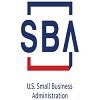Know about the types of FDA Drug Master File and its review and benefits
12/06/2020
Category: Other Blogs
A Drug Master File (DMF) is a document submitted to the FDA that includes a large amount of potentially confidential information about where, how and why drugs for human consumption are produced and stored. As of May 2018, all DMFs except Type III must be sent in eCTD format.
Types of FDA Drug Master Files
There are five types of DMFs each needed different type of information, but each has similar levels of detail and complexity.
Type I DMFs is considered while manufacturing facilities and procedures while type II DMFs include all the processes used in the preparation of the drug product such as drug material, intermediates and all drug substances.
Type III DMFs are considered with the packaging material for drug products, including bottles and caps to PVC resins.
Type IV DMFs include the excipients that are used to bind drug powder together to convert it into a tablet such as starch and cellulose.
DMF submission format
We recommend that you submit the Drug Master File in electronic form. This is because submitting in mixed format (paper and electronic) may delay the review.
All electronic submissions require a pre-assigned number. No pre-assigned numbers are required when converting from paper to electronic format. Previously assigned numbers are in 6-digit format and must be used. 2345 becomes 002345. The sequence number for the first submission in electronic format must be specified as “0000”. To convert paper Drug Master File into an electronic format, it is must to submit the entire DMF in electronic format. Electronic formats cannot be converted to paper formats. After the DMF holder submits electronically, all subsequent submissions must be in electronic form.
REVIEW OF DMFs
After receiving the Drug Master File; the managed content will be reviewed. This can take a couple of weeks. If the DMF is okay with the managed content, a confirmation will be issued, and a notification will be sent to the owner of the DMF number. If the DMF is okay from an administrative point of view, the owner will be notified of the deficiency letter.
Full review of technical information of Drug Master File FDA will be done only when all the following events occur:
- DMF holders submit a DMF Approval Form (LOA) to their respective regulators. This LOA must contain the DMF number/acknowledgement number.
- The owner sends a copy of the LOA to the authorized party (customer).
- The customer submits an application containing a copy of the LOA to the FDA.
In the EU, ASMF must be submitted in various sections of the CTD module as follows:
Module 1 Contains management and prescription information (management information is only required for ASMF)
Module 2 Contains a general quality of service (QOS) of the “applicant part” (open part) and the “restricted part” (closed part). This is nothing more than a summary of the information provided in Module 3.
Module 3 contains all quality information. It includes the applicant part and the restricted part. The applicant’s part contains the information required for marketing approval. The restricted portion includes the confidential information of ASMF holders and can only be shared with health authorities.
Benefits of DMF
Drug Master File maintains the confidentiality of the owner’s proprietary information (such as manufacturing procedures).
Finished product manufacturers believe that API manufacturers with a DMF number / CEP (Certificate of Conformity) are more reliable in terms of quality and regulation.
tagging: Drug Master File


